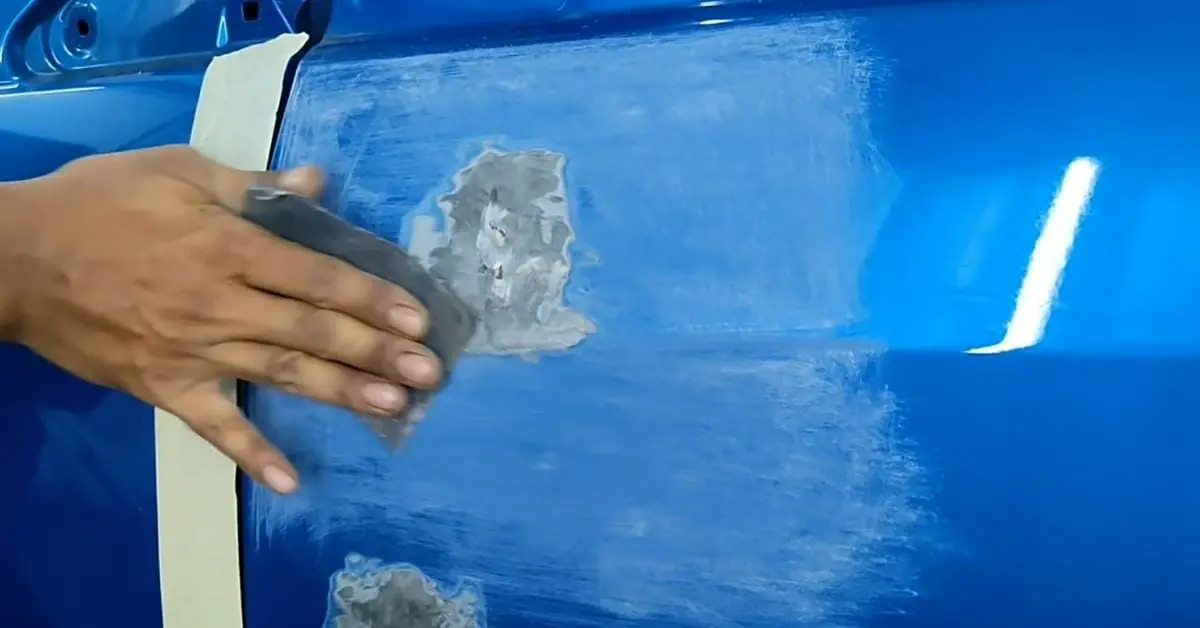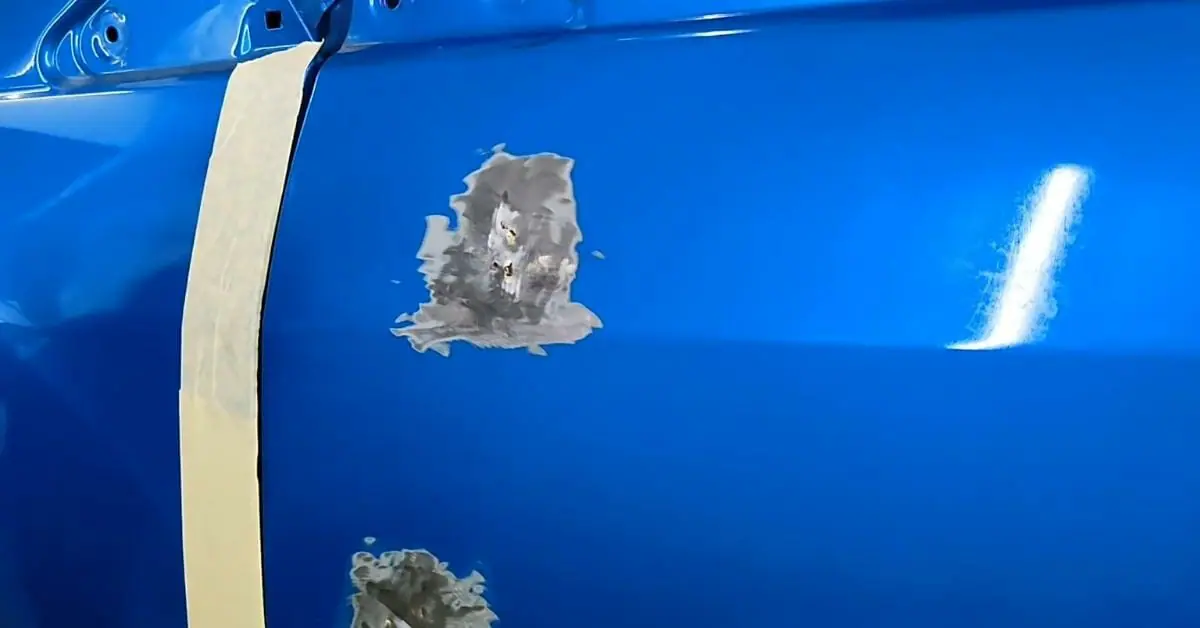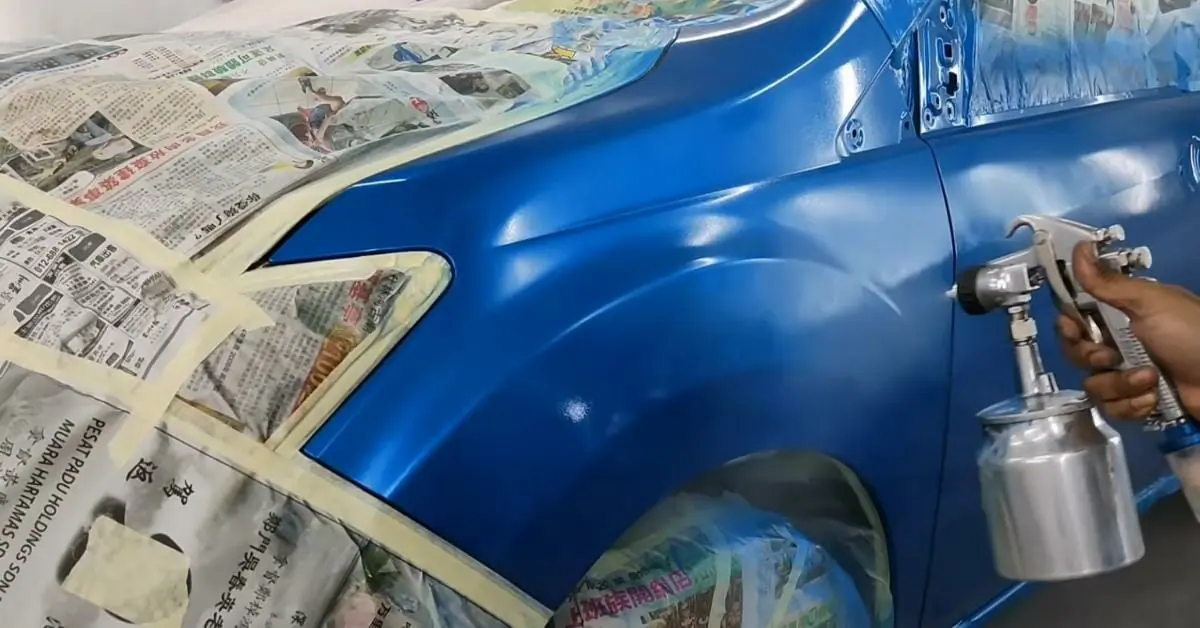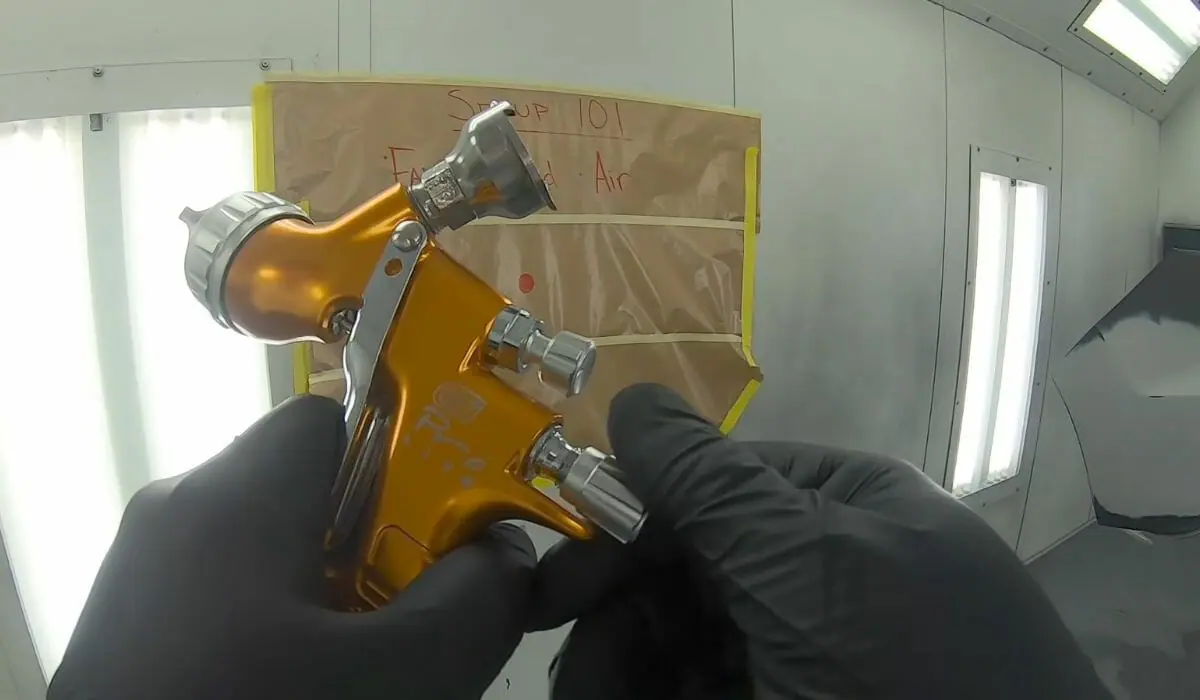Automotive paint spray is the most used painting process in automobiles nowadays; it is inexpensive, fast, and gives a smooth and beautiful finish.
There are almost 50,000 different auto paint colors available on the market. With so many colors to choose from, you will have fun choosing the colors you like.
There are metallic and solid colors, candy colors, and pearl paint colors. If you still don’t like the options, you can still customize the color.
There are unique processes in paint spray, each one as important as the next step. Thus, to achieve a more than perfect paint outcome, they must follow these distinct steps.
How Do You Use An Automotive Paint Spray Easily

Choose the best location.
Before any painting activity, a suitable location is a must. The area should have plenty of space for movement and be well-lit and well-ventilated.
This is the basic rule when spraying paint because if there is not enough ventilation, there is a greater danger of paint inhalation (this assumes you are also wearing protective gear).
It should be well lit so you can see what you are painting. Remove any other material or furniture that is inside the place where you will do the paint job.
There should also be an electrical outlet. Always choose a place that has minimal dust and dirt around.
Dent removal
You can try using a rubber plunger for a steel surface that has been pushed in. Put a few drops of water on the edge of the rubber, place it where the dent is, and establish suction by pushing on the plunger and then pulling it back to you.
It may take a few tries before the metal returns to its normal flat surface. This technique can be used if the dent is not all that bad and in areas of the vehicle where there is an enormous expanse of metal that can easily be pulled out by the plunger.
However, for the steel part, you can use a flat hammer, but make sure you have wrapped a cloth around the hammer’s head to protect the paint of your car once the hammer has dented the parts.
Make sure that you bang only the underside of the car where the dent is. Do this carefully, as you don’t want to overwork the metal and stretch it.
Fill out gouges, dings, and depressions using a body filler putty
For the part where there is chipped paint or dings, you can fill them in with glazing putty. Use a putty knife for application. Carefully follow the step-by-step guidelines on how to use the glazing putty.
This technique can be used for minor dings and chipped paint. Otherwise, you may need a body filler specifically designed for the plastic, steel, or aluminum parts.
Ensure you have checked all the parts of the car that need the above technique so you can do everything in one go.
Hole repairs

Once you remove rust from your car, there is a tendency for holes to appear, as this will replace the rust that was removed. This is unsightly when painted on, so you need to cover these holes.
You can buy putty from the hardware store specifically for repairing holes; it will not cost you much, either.
Directly squeeze the putty in the hole, making sure that it flattens out, and then remove the excess. Let it dry for about 45 minutes to an hour, and then you will need to smooth the surface.
Sanding and smoothing the edges

Once the putty had completely dried up and the curing process was complete, we checked the site for any bumps or unsmooth surfaces. To smooth these out, you will need sandpaper. All areas should be equally smooth. Sandpaper is the best go-to for these tasks.
For a good finish, it is best to manually sand the desired area in all directions. Edges must also be sanded thoroughly to eliminate ridges that may appear after the painting process.
If you have this tool, you can also use block sanders. They can easily do the task, but are twice as fast.
Removing the previous body paint

Some use a hand sander for this task, and it may or may not do the job well because removing every bit of old paint from the vehicle is difficult. You may just be left with a patch-up job afterward.
The best tool for this job is the electric orbital sander, which can remove paint from extensive areas of the vehicle. However, the electric orbital sander can take even longer to finish the job, so you have to be patient and careful while using it.
The electric high-speed sander can do its job efficiently because it is a high-powered tool perfect for these tasks.
Remember to apply the same sanding pressure to all areas of the vehicle so that old paint is removed equally. You may also sand the bottom if you prefer. For a perfect result, we should apply the circular motion when sanding.
Continuously sand all parts of the vehicle to remove all leftover gloss, which will cause the automotive paint spray and primers to not stick well to the car.
Always take a few steps back, check the area you have just sanded, and then see the other areas to compare whether every gloss and paint has been removed equally.
Clean up the vehicle after sanding.
After the sanding process and removal of the old paint, debris and dust particles will remain on the vehicle. It needs complete cleaning.
By wiping and clearing the area, the dust particles will not be left to cling to the car when it is being painted.
When this happens, your vehicle will not look appealing with some dust and debris that is obvious after the painting process. Best to use a wet cloth for this task, as dust and debris cling to a damp cloth easily.
Taping surfaces to make sure it is safe from paint
You may opt to use masking tape or perhaps newspapers because this will completely cover the parts of the vehicle you don’t want to have some paint on, like the glass, door handles, mirrors, tires, and window trim. Check the other areas that need covering.
Prime the vehicle

Since you have sanded your vehicle, the metal requires a corrosion-resistant and self-etching primer to prime your car’s surface.
You can also use different spray guns for primer. Using a brush for priming your car may not be the best idea; it will take a lot of effort and time to finish the process.
A sprayer will give you an even primer coating all over the vehicle. The best primer to use is an epoxy primer because it is the most versatile primer and is compatible with the paint coatings available.
You should use a back-and-forth stroke for primer and move the primer paint spray at a consistent pace to achieve an even coating. Before applying the second primer coating, you must wait for at least 15 to 20 minutes to ensure the first coating is dry.
Then, the same will be done for the third coating. It is well-advised that you use a thin coating instead of thick sprays of primer paint, as this will cause the paint coatings to drip and will take a long time to dry; it may take you the whole day just to do that.
Wait for the primer to dry.
Always dry the primer before doing anything else, like sanding the vehicle again. Sand carefully this time cause you do not want to expose metal surfaces again. Again, you need to use a back-and-forth stroke.
Clean up after every sanding to ensure the vehicle’s surface is debris-free. You may use soap and water for this task, plus a clean cloth. Then, there is a need to rinse the vehicle and towel it dry.
Painting

First, make sure you are ready for painting, taking into consideration that you have read the directions and have prepared the paint for spraying.
You can also test the paint first on a piece of cardboard or any hard material. Start spraying from a distance, and then you can check the painting’s outcome.
By doing this step, you are not just testing the sprayer but also checking the paint color’s outcome, checking the spray paint’s pressure, and knowing how to control the tool.
Hold the paint spray at a distance.
By holding the paint spray at least 8 to 12 inches away from your vehicle, you have the right space and distance to see your job, and the paint will not be concentrated on just one spot.
Do not spray too quickly
Do not spray paint the vehicle too quickly; it should be in slow and even strokes, right to left, and not in an up-and-down motion. If you miss an area, just return to it in your next coating.
Drying time
For every automatic paint spray, wait for the drying time, which can be anywhere from 30 minutes to an hour.
Spray more coats
To completely cover the surface, spray 3 to 4 coats in even motions, but make sure the vehicle is dry after every application.
Do not heavily spray in one go.
Do not rush the paint application and do not heavily spray the vehicle; this will cause patches of paint in one area and will only create a problem that you need to correct afterward.
Correct every mistake
Before you continue with the painting, you should be aware and check where you have incorrectly sprayed the paint, You can already see paint build-up or runs as this will show easily.
Sand and clean
So, when you are in your last coat, you need to sand the surfaces for a powdery residue, then clean with a clean cloth and spray paint for the last coating.
Clear paints
You may wait half an hour before spraying clear paint. It is sprayed the same way as regular paint, using the same motion. Clear paint can help protect your vehicle’s paint from UV rays.
What are some essential tips for spray painting your car?

- Do not overspray in one area; spray on small surfaces one at a time.
- You should always dry the previous paint before spraying another one. If you are not happy with the result, it is easy to repaint and make the mistake of spraying every painting in one go.
- Nozzles of the paint spray should always be clean of debris or dirt particles.
- Instead of pushing the paint spray, you may invest in triggers for better paint quality.
Conclusion
Professional car painting services may cost a lot of money for a well-done job or a more affordable one, for which you may or may not like the result.
However, if you are keen to DIY, no one can stop you from painting the car yourself since there are many self-help videos available online, and painting materials are easy to purchase. This method may also save you a lot of money.
You May Read Also

